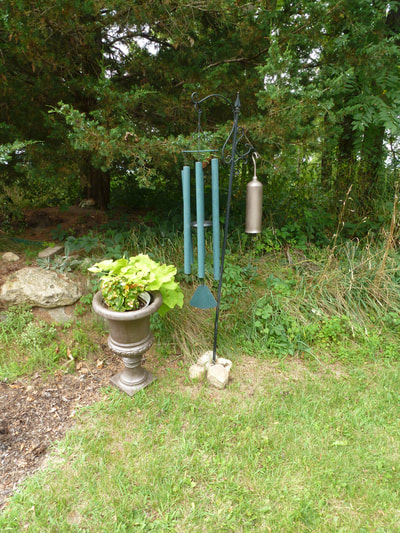|
Cultural anthropologist teaches us that the calendar evolved from the development of agriculture. It was important to understand the seasons and keep track of the right time to plant, nurture and then harvest various crops. Early man’s survival depended on observing the passage of time to grow food.
The Julian calendar was introduced by Julius Caesar in 45 BC. Caesar is credited with dividing the year into 12 months with 365 days and a “leap day” every four years. While accurate in the short term over time it lost about 10 days in a year. More important for Christians, the Julian calendar couldn’t be used to determine an accurate date for Easter. In 1582 Pope Gregory introduced a new calendar to correct the errors in the Julian calendar. The biggest change in the Gregorian calendar was that it eliminated 10 days from the calendar. The day following October 4, 1582 became October 15, 1582 – the day the Gregorian calendar was officially adopted. All Christian nations adopted the new Gregorian calendar which also provided a method of determining the date for Easter. That’s probably more than you wanted to know about calendars. My point is that my life revolves around a calendar. I set dates for everything and I order my life around the dates on the calendar. For example, I decided to write a blog every Wednesday – ate on a calendar. I know I will devote time every Wednesday morning to blogging. Meetings are on my calendar. Important family dates – birthdays/anniversaries etc. are on my calendar. Every morning I review my calendar to determine what activity I need to be doing. It’s my way of creating order out of chaos.
0 Comments
I rarely receive any comments on my blog post, except those mysterious posts from far off lands that I’ve written about previously.
I have had several comments on my posts about blacksmithing and writing. Again, the comments aren’t in the comment section of the blog. I receive them by gmail. This is another of the 21st Century mysteries to me. Anyway – I’ve received several requests for a picture of my forged bell. I’ve fended off those requests because – in truth – it’s not much to look at. I expect many will look at it and wonder. How did you spend 6 hours making that? Well, all the work is in forging the clapper inside the bell. The bottom of the clapper extends only about ½” below the flared bottom of the bell. The clapper is designed to be removable so that you can show your friends the intricate workings of the bell. I can’t imagine any of my friends having the slightest interest. What I can’t share with you is the sound. For that you must visit me and I’ll let you ring the bell. For those of you kind enough to request a picture, I’ve included two – a full shot of the chime and the bell and a close up of the bell. (No I didn’t make the chime, it was purchased). Here is a list of the regular websites I visit with a brief description of each one.
Funds for Writers [email protected]. This is a free weekly newsletter published by a mystery writer. Lots of tips, list of jobs available and list of grants available. There is a paid subscription version called Total Funds for Writers. Valerie Biel newsletter – biel-newsletter. Subscribe to The Three R’s: Reading, wRiting, and Roaming. A Writer’s Forum has tips, tools and shortcuts that Valerie has learned in her journey as a writer. The Three R’s Reading wRiting and Roaming has articles about the craft of writing. The content is designed to be interesting to both readers and writers. From author interviews to book reviews and/or writing advice and publishing news, you can even choose which topics you’ll receive when you subscribe. Christine Keleny blog at: ckbookspublishing.com. A variety of topics for readers and writers and publishing news. Good Reads Author newsletter – once a month highlights authors, tips and news of the publishing industry Goodreads newsletter – once a month up to date information on publishing industry Historical fictionistas – a group you can join within Goodreads. They select a book every month to read and review. Lots of comments. Can submit your own book to read within rules set by group. Live, Write, Thrive – a weekly blog by novelist, copyeditor and teacher C.S. Lakin. Has blog series on craft topics and guest bloggers. Lit Hub Daily – daily interesting tidbits on writing, authors, literature etc. Authors Publish – [email protected] & www.authorpublish.com/download-the-2017-guide Can download list of publishers who accept unsolicited manuscripts. E-mail updates. Publishers Weekly – [email protected] The industry standard on publishing news. Randy Ingermason Advanced Fiction Writing e-zine – free monthly publication from author of the snowflake method of writing. Articles on craft, articles on technical aspects of writing Wisconsin Writers Association – wiwrite.org Where Wisconsin writers connect. Literary contests, annual conference. Previously I shared my experience to make a bell out of an oxygen tank cylinder at a blacksmithing class and drawing a few analogies to writing. This week I continue the blacksmithing theme. In the beginning blacksmithing class the first two hours are spent on learning about fire. The forges we used were open with a hand crank bellows to supply air. The forge stands about waste high is forty inches long and twenty four inches wide and three inches deep.
Success in forging is based on the fire – the right heat over a long period of time. We used a special charcoal that was small chunks about the size of peanuts. To start the fire you crumple up some newspaper and make a small mountain of charcoal on top of it. You light the newspaper and slowly turn the crank to give a small stream of air. The paper flares up and the charcoal begins to bellow sooty smoke like one of the steel mills at the turn of the century. With constant air the fire grows in the center of the charcoal mountain. As the fire grows you push more charcoal up the mountain until it is about eight inches tall. The key is to turn the crank at a constant speed letting the fire grow naturally. When the fire in the center of the charcoal is a bright yellow you are already to forge metal. I believe writers must have a fire in the heart in order to write. There needs to be something that will sustain the writer through periods of uncertainty, doubt, depression, rejection, illness and a myriad of other maladies. Like the charcoal the fire in the heart needs to burn bright yellow. The fiction writer’s fire is not inspiration, it is imagination. Imagination is the capacity to create a place, characters, story, plot and scenes that are woven together into a story. The fuel for imagination is life, all of the experiences a writer has that become translated into a work of fiction. Keeping the charcoal a shining yellow takes practice and patience. Keeping the writer’s imagination also takes practice and patience. Imagination is a gift that like the forge fire must be nurtured. |
rex owensI write to tell the story of our human saga. Categories
All
Archives
May 2021
|



 RSS Feed
RSS Feed